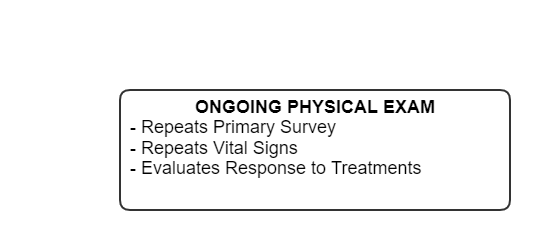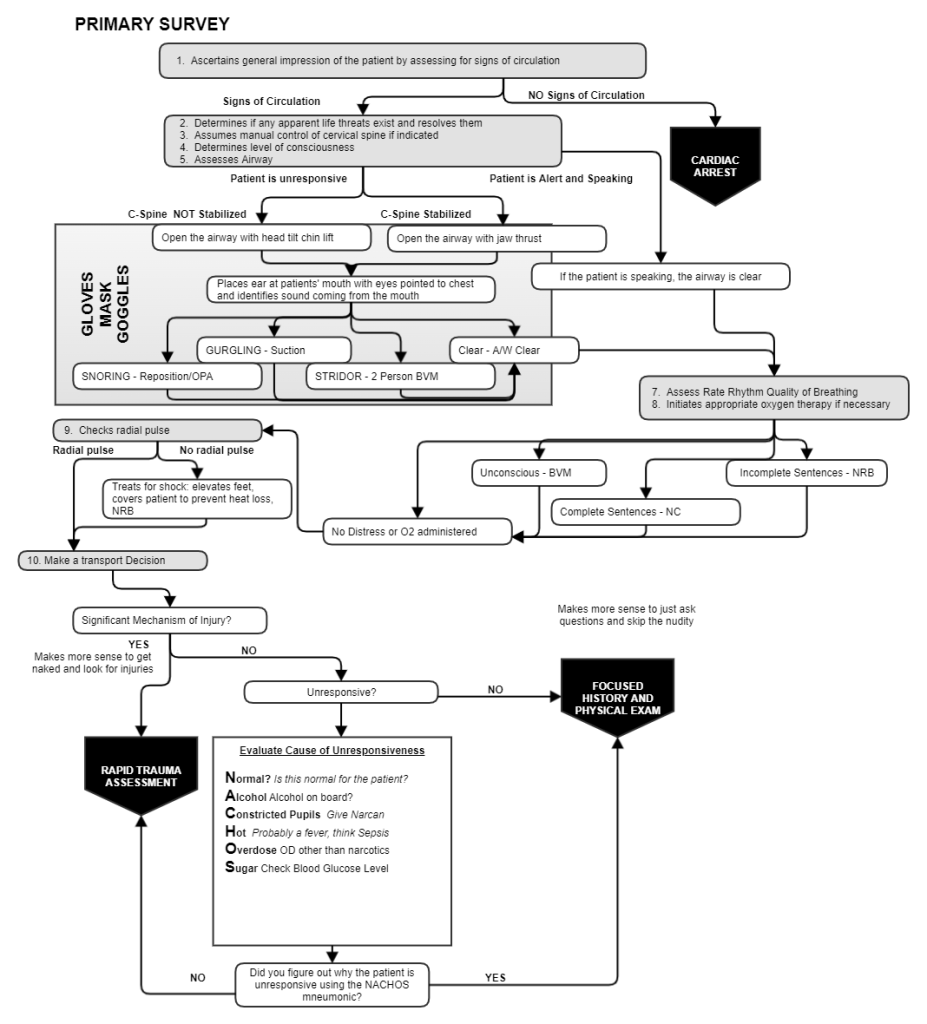Reassessment
Published .

Once the patient has been loaded into the ambulance, the assessment continues. Did the patient’s bleeding actually stop? Is the patient no longer looking like they had a stroke? Is the patient becoming confused? Exactly what to look for depends largely upon what was initially found during the primary survey.

The reassessment includes the primary survey, another set of vital signs, and assessment of response to treatments.
The primary survey

Vital signs
Another set of vital signs should be performed every 5 to 15 minutes depending upon the patient’s condition. The vital signs should be recorded on the patient care report. Comparing the current vital signs to previous ones is way to determine what direction the patient’s condition is moving in. The vital signs are:
- Respiratory rate
- Pulse rate
- Blood pressure
Response to interventions
Asking the patient to rate their pain on a scale of 1 – 10 and comparing the rating with previously recorded pain scale assessments can let the medics know that their interventions are working. Re-examining bleeding wounds and broken bones or any other interventions that were performed is necessary to determine if they are still needed (did the bleeding stop) or actually working (does it look like the splint prevented movement of the broken extremity). These are the kinds of questions that reassessment vis a vis the ongoing physical exam will answer.
